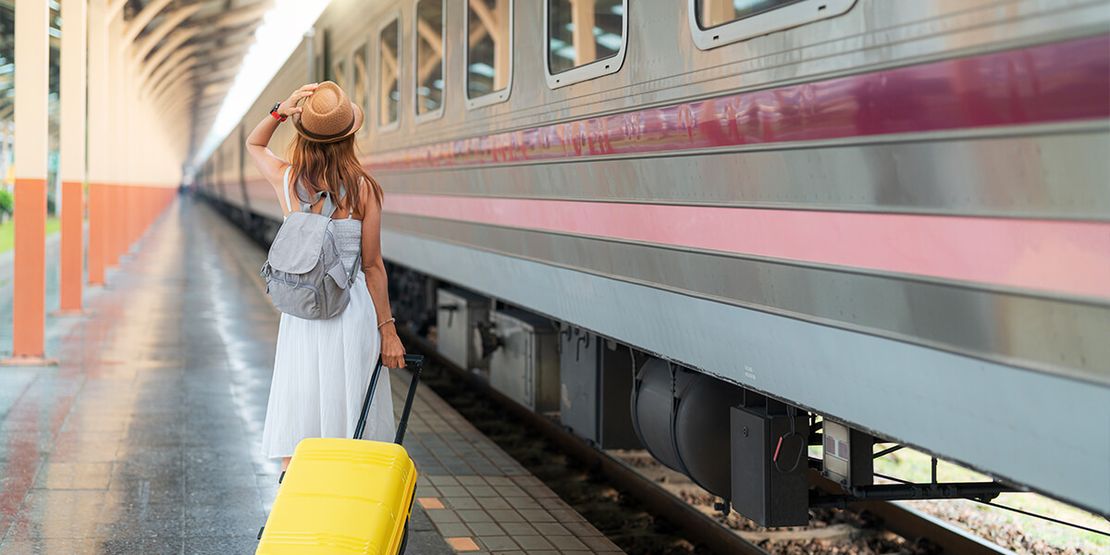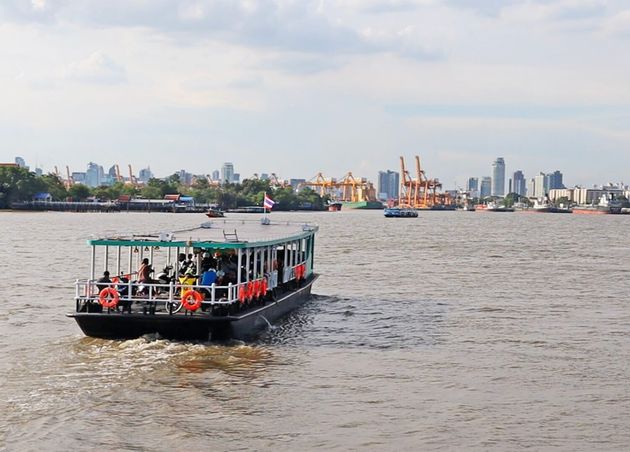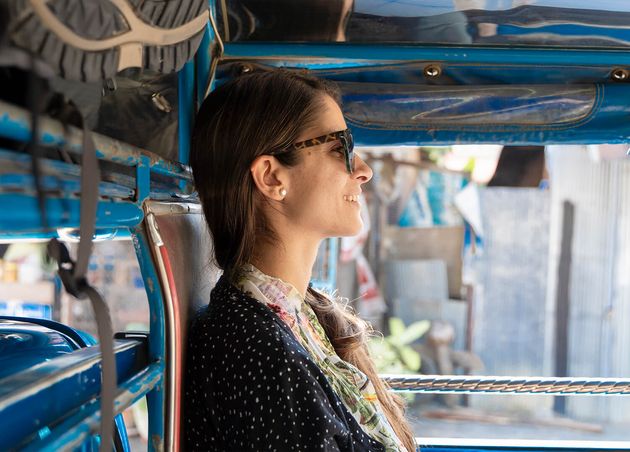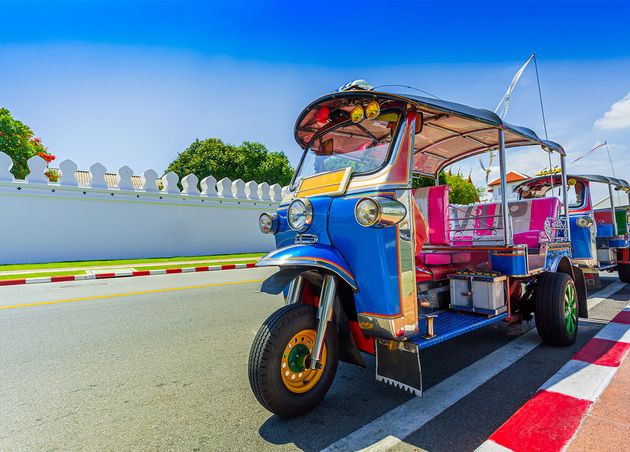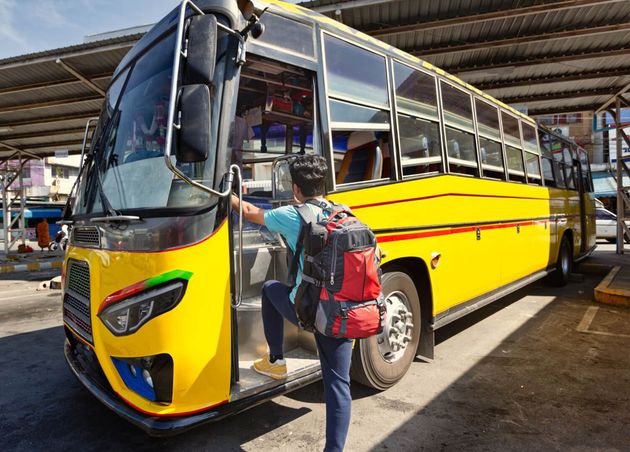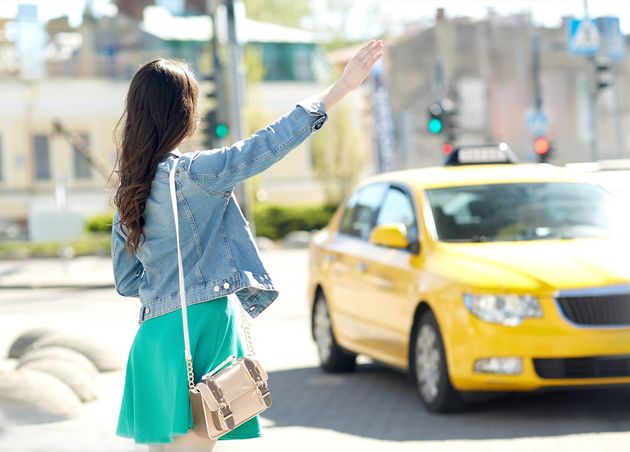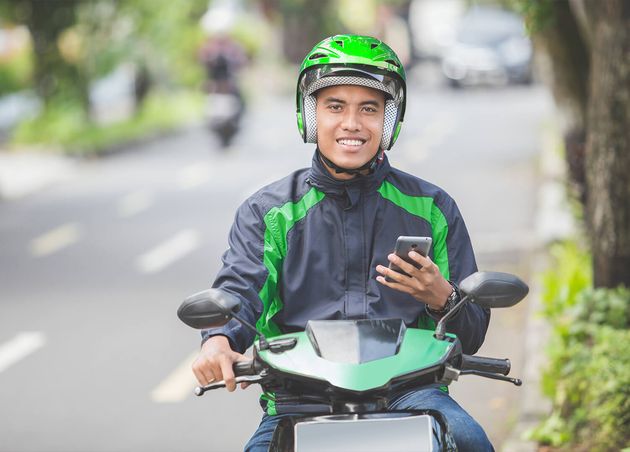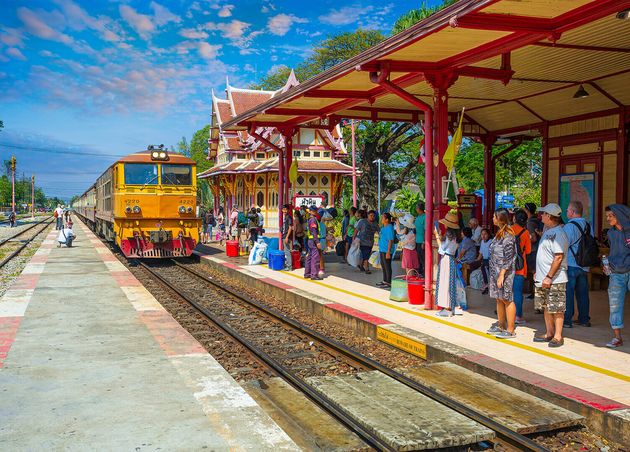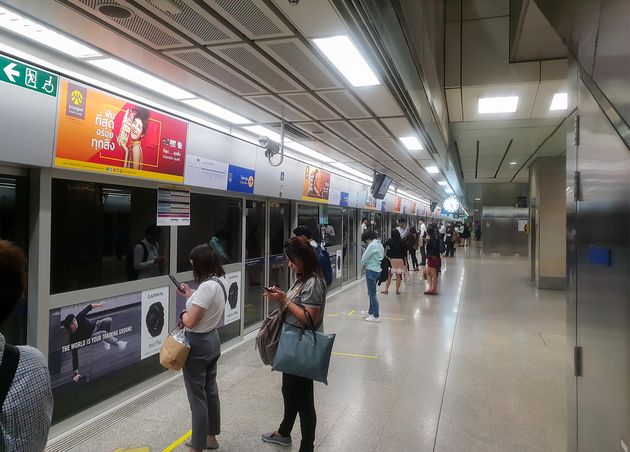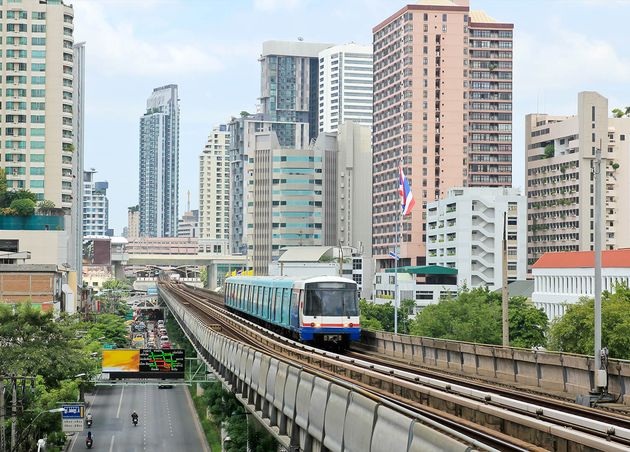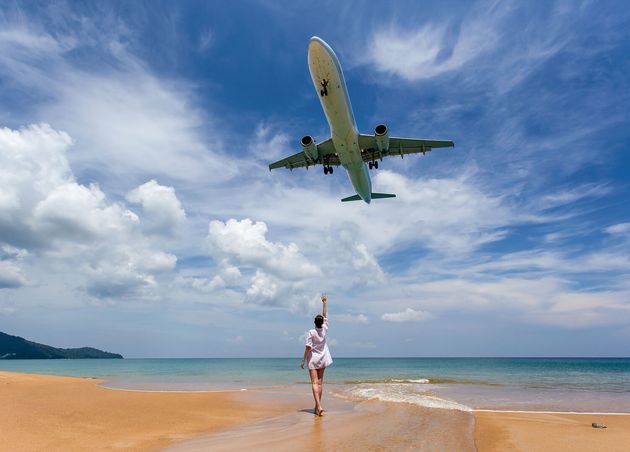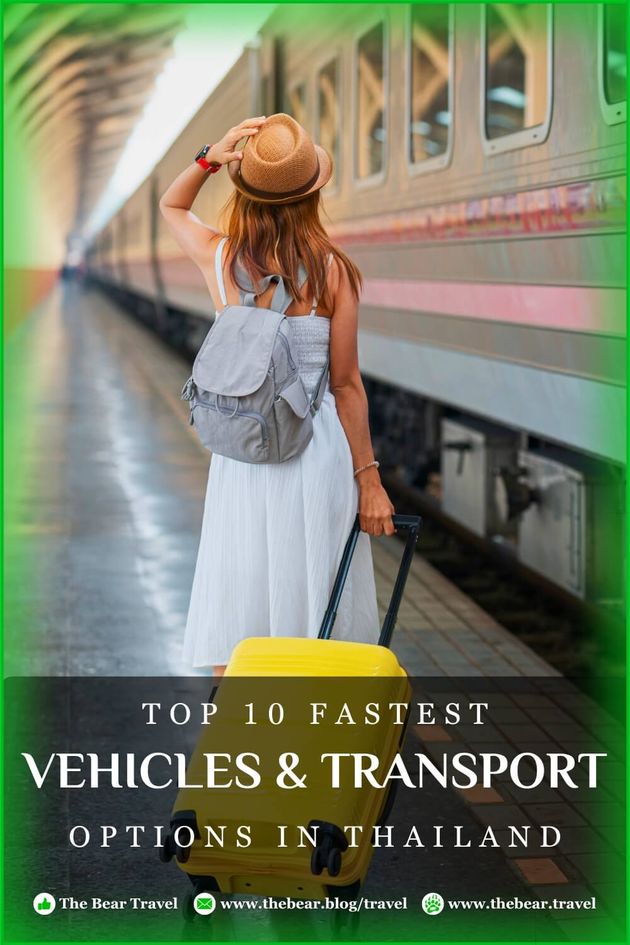Top 10 Fastest Vehicles and Transport Options in Thailand
Thailand is a country that’s packed with stunning scenery and rich history, but the truth is, figuring out how to travel efficiently across its landscapes can feel a bit overwhelming. Don’t sweat it—I’ve got you covered 🐻
After hitting the road myself and teaming up with a solid crew of fellow travelers and The Bear Group, we’ve put together a list of the fastest ways to get around Thailand, tailored to suit your budget and travel style.
Whether you’re a seasoned visitor or it's your first time exploring the Land of Smiles, this list is your go-to guide for moving through the country quickly and easily so you can spend more time enjoying everything Thailand has to offer. Let’s dive into the top 10 fastest ways to get around Thailand!
Fastest Transportation Options to Explore Thailand
If you want to make the most of your trip, getting familiar with the fastest ways to travel around Thailand is a game-changer. Whether you're trying to catch a flight, maneuver through Bangkok's crowded streets, or make your way to a laid-back island, knowing how to get around quickly can seriously upgrade your experience.
In this article, I've laid out the top 10 fastest transportation options Thailand has to offer, making sure you can explore the country with ease and comfort. From efficient domestic flights to the convenient BTS Skytrain, there's something here for everyone.
Now, let's dive in and figure out how to move fast and smart across this incredible country!
#10 Ferries and Boats (10-40 km/h)
If you're exploring Thailand's waterways, ferries and boats are your go-to option. Suppose you're cruising along Bangkok's iconic Chao Phraya River or heading to the stunning islands in the Andaman Sea or the Gulf of Thailand.
In that case, these vessels offer both practicality and a unique perspective. Speeds typically range from 10 to 40 km/h (6 to 25 mph), depending on the type of vessel and route.
Ferries are a favorite for both locals and travelers alike, providing breathtaking views of Thailand's islands and coastline. It's not just about getting from point A to point B—it's about enjoying every second of the journey along the way.
Things to Keep in Mind:
- Chao Phraya Express Boat
- This service in Krung Thep Maha Nakhon (Bangkok) offers various lines, each identified by colored flags.
- The Orange Flag line is particularly useful for tourists, running all day and stopping at major landmarks.
- Fares are affordable, with a flat fee of 15 baht (0.41 USD) for most journeys.
- Tourist Boat
- For a more comprehensive sightseeing experience, consider the blue-flagged Chao Phraya Tourist Boat.
- It offers a hop-on-hop-off pass for 180 baht (4.95 USD) per day, with on-board English commentary.
- Island Ferries
- When traveling to islands, you'll likely use larger ferries or speedboats.
- These can vary significantly in comfort and speed, so check for any options available for your specific route.
- VIP Options
- If you're after something more comfortable, private cabins and VIP seats are available on some vessels, especially for longer routes between islands.
- They cost more, but the added comfort and amenities can make your trip extra special.
#9 Songthaew (20-40 km/h)
Songthaews are essential when getting around Thailand, especially in smaller towns and more rural and suburban areas.
These converted pickup trucks, whose name literally means "two rows" in Thai, aren't going to break any speed records, typically cruising at 20-40 km/h (12-25 mph). But what they lack in speed, they make up for in charm and practicality.
I've jumped on these a few times myself, and while they're not built for speed, they're perfect for when you're not in a rush and want to take in the scenery. Plus, they're a great way to experience local life - you'll be sitting shoulder-to-shoulder with locals, giving you a real taste of day-to-day transportation in Thailand.
Things to Keep in Mind:
- Stopping
- Don't forget to signal when you want to get off.
- In most songthaews, you'll need to press a buzzer or rap a little hard with a coin on the metal railings.
- The driver won't stop unless you signal.
- Fares
- This is where songthaews shine—fares are incredibly cheap and affordable.
- In many towns, a short trip might cost you as little as 10-30 Thai Baht (about 0.30-0.90 USD).
- However, prices can actually vary significantly depending on the location.
- For example, in tourist areas like Koh Samui, fares might be higher, potentially up to 100-300 Thai Baht (around 2.75 to 8.25 USD) for longer trips.
- Routes
- In some towns, especially in the northeast, songthaews follow fixed routes. Others, like Chiang Mai, act more like shared taxis, picking up multiple passengers going in roughly the same direction.
- In some towns, especially in the northeast, songthaews follow fixed routes. Others, like Chiang Mai, act more like shared taxis, picking up multiple passengers going in roughly the same direction.
- Hailing
- To stop a songthaew, simply stand at the roadside and wave your hand, palm downwards.
- Never wave your hands with your palm upwards, as this may leave an impression that you're rude, demanding, or impolite, especially in some Asian cultures.
- However, this isn’t always the case—it can vary depending on the region and the unique cultural nuances you’ll encounter along the way.
- Payment
- Usually, you pay at the end of your journey. It's a good idea to have small bills ready.
While Songthaews might not be the fastest option, they offer a cheap and authentically Thai way to get around. Just remember, the experience can vary quite a bit depending on where you are in Thailand, so it's always good to ask locals or your accommodation for specific advice about using Songthaews in your area.
#8 Tuk Tuk (20-40 km/h)
Ah, the Tuk Tuk—probably the most iconic ride in Thailand. These three-wheeled vehicles are especially popular with tourists and are perfect for quick hops around the city.
Tuk Tuks don’t go fast, cruising around 20-40 km/h (12-25 mph), but they make up for it with character. I’ve taken more than a few of these, and while they’re fun for short distances, they’re definitely not built for speed. But that’s the point—it’s all about the experience.
With over 30,000 Tuk Tuks weaving through the streets of Bangkok, hopping into one is almost a rite of passage. They can carry about three or four passengers and are ideal for zipping through traffic, especially if you're in the mood to see the city from a unique vantage point. Just remember, you’re paying for the ride and the experience.
Things to Keep in Mind:
- Safety
- These rides can get a bit wobbly, especially when they take sharp turns, so keep your belongings secure—best between your legs to avoid anything getting snatched.
- These rides can get a bit wobbly, especially when they take sharp turns, so keep your belongings secure—best between your legs to avoid anything getting snatched.
- Cost
- Tuk Tuks aren’t metered like taxis, so you’ll need to negotiate the fare upfront. Expect to spend around 50 to 150 Thai Baht (1.50 to 4.50 USD), depending on the distance and your bargaining skills.
- And yeah, it’s usually a bit pricier than a regular taxi.
- Scams
- Be on the lookout for drivers trying to overcharge you. It’s pretty common, especially with tourists.
- A little research or asking locals about the going rate can save you from overpaying.
#7 Bus (20-100 km/h)
When it comes to affordable travel across Thailand, buses are a go-to option—whether you’re zipping through cities or cruising between provinces. Buses in Thailand can hit speeds up to 100 km/h (62 mph) on highways, but in reality, their speed depends on the route and conditions.
I’ve taken buses all over Thailand, and while they’re not the fastest option—especially in traffic-heavy urban areas—they’re reliable and budget-friendly. For longer hauls between cities, buses can be comfortable and easy on the wallet.
But if speed is what you’re after, especially in traffic-heavy areas, you’re better off sticking with faster options like the Skytrain or MRT. Remember that traffic conditions can reduce travel times, especially during rush hour.
Things to Keep in Mind:
- Operating Hours
- Most buses run from 5:00 AM to 11:00 PM daily, with some night buses available.
- Most buses run from 5:00 AM to 11:00 PM daily, with some night buses available.
- Types of Buses and Fares
- Non-air-conditioned (Red or white-blue)
- 8 Baht (0.25 USD).
- 8 Baht (0.25 USD).
- Express buses
- 8.5 Baht (0.26 USD).
- 8.5 Baht (0.26 USD).
- Air-conditioned (including Euro II) Buses
- Depending on the distance, 12-25 Baht (0.35-0.75 USD).
- Non-air-conditioned (Red or white-blue)
- Speed Limits
- In cities like Bangkok and Pattaya
- 60 km/h (37 mph) for buses carrying more than 15 passengers.
- 60 km/h (37 mph) for buses carrying more than 15 passengers.
- Outside urban areas
- 80 km/h (50 mph)
- 80 km/h (50 mph)
- On highways
- Buses can reach up to 100 km/h (62 mph), but they’re still subject to speed limits.
- In cities like Bangkok and Pattaya
#6 Taxi (30-80 km/h)
Taxis are a staple in Thailand's big cities, especially in Bangkok. They're a lifesaver when you need a break from the heat, offering air-conditioned comfort while cruising at speeds around 30-80 km/h (18-50 mph), depending on traffic and location.
I remember one time hopping into a taxi to escape the Bangkok heat after a long day of riding. The relief of that cool air was priceless. Taxis are great when you need comfort, but remember that you might find yourself stuck watching the world crawl by in heavy traffic.
Things to Keep in Mind:
- Fares: As of 2023, the starting fare is 40 baht (approximately 1.20 USD) for the first kilometer. The rate then increases based on distance:
- 6.50 baht/km (0.20 USD) for 2-10 km
- 7 baht/km (0.21 USD) for 11-20 km
- 8 baht/km (0.24 USD) for 21-40 km
- 8.50 baht/km (0.26 USD) for 41-60 km
- 9 baht/km (0.27 USD) for 61-80 km
- 10.50 baht/km (0.32 USD) for distances over 80 km
- 6.50 baht/km (0.20 USD) for 2-10 km
- 🐻 Big Bear Reminder: I strive to keep our content as up-to-date as possible. Fare structures and exchange rates may fluctuate, so it’s always a good idea to confirm current rates with local authorities, taxi companies, or currency exchange services. The USD equivalents provided are approximate and may vary based on the latest rates.
- Meter Usage
- Always insist on using the meter.
- If the driver refuses, it's best to find another taxi.
- Traffic Charges
- In heavy traffic (speeds below 6 km/h), an additional 3 baht per minute is added to the fare.
- In heavy traffic (speeds below 6 km/h), an additional 3 baht per minute is added to the fare.
- Airport Surcharge
- Taxis from Don Mueang and Suvarnabhumi airports can charge an extra 50 baht (1.50 USD).
- Taxis from Don Mueang and Suvarnabhumi airports can charge an extra 50 baht (1.50 USD).
- Luggage Fees
- For airport taxis, there's now a luggage charge ranging from 20-100 baht (0.60-3.00 USD) per piece, depending on size.
- For airport taxis, there's now a luggage charge ranging from 20-100 baht (0.60-3.00 USD) per piece, depending on size.
- Support
- If you encounter any issues, you can contact the support lines at 1644 or 1584.
- If you encounter any issues, you can contact the support lines at 1644 or 1584.
- Rush Hours
- During rush hours (7-9 AM and 5-8 PM), you might want to consider alternatives like the BTS Skytrain or MRT if your destination is near a station.
#5 Motorcycle Taxi (30-50 km/h)
Motorcycle taxis are the go-to option when you need to navigate through congested streets fast. These rides are perfect for short trips, offering flexibility that larger vehicles just can't match. They typically travel at around 30-50 km/h (18-31 mph), which may not sound fast, but in cities like Bangkok, it's a lifesaver when you need to cut through gridlock.
Now, I'm no motorcycle taxi for hire, but as someone who loves two-wheel travel, I've got a lot of respect for these riders. They know their routes, and when you're in a hurry, you can't beat the convenience. If you're in the city or looking for a quick way around, a motorcycle taxi gets you where you need to go, especially if you're light on luggage and don't mind the breeze.
Things to Keep in Mind:
- Cost
- Fares typically start at 25-30 baht (0.69 to 0.83 USD) for short trips, with prices varying based on distance and location.
- Always negotiate the fare even before starting your journey.
- Navigation
- These riders know the streets better than most—don't be surprised if they get you there faster than any GPS could.
- These riders know the streets better than most—don't be surprised if they get you there faster than any GPS could.
- Safety
- While convenient, consider safety first. Helmets are mandatory by law, so make sure you're offered one.
- While convenient, consider safety first. Helmets are mandatory by law, so make sure you're offered one.
- Identification
- In Bangkok, look for drivers wearing numbered vests for official identification.
- In Bangkok, look for drivers wearing numbered vests for official identification.
- Future Developments
- The Bangkok Metropolitan Administration (BMA) is considering developing a new application for motorcycle taxis to ensure passenger safety and fair pricing. This could potentially offer a more regulated and transparent service in the future.
🐻 Big Bear Reminder: Remember, while motorcycle taxis offer a fast and efficient way to navigate busy city streets, ensure you always prioritize your safety and comfort over anything else, especially when choosing your mode of transport.
#4 Train (40-120 km/h)
Trains in Thailand offer a unique blend of scenic travel and budget-friendly transportation. While they may not be the fastest option, with speeds typically ranging from 40-120 km/h (25-75 mph) depending on the route and train type, they provide a comfortable way to cover long distances.
As of January 2023, Bangkok's main hub for long-distance trains has shifted from the historic Hua Lamphong Railway Station to the Krung Thep Aphiwat Central Terminal (formerly known as Bang Sue Grand Station). This ultra-modern facility is now the largest railway station in Southeast Asia, boasting around 26 platforms and a capacity for over 620,000 passengers per day.
While trains might not be the fastest option, they offer a unique way to see Thailand's diverse landscapes. Just be prepared for potential delays, and enjoy the journey!
Things to Keep in Mind:
- New Central Station
- Most long-distance trains now depart from Krung Thep Aphiwat Central Terminal. It's connected to the MRT Blue Line (Bang Sue station) for easy access.
- Most long-distance trains now depart from Krung Thep Aphiwat Central Terminal. It's connected to the MRT Blue Line (Bang Sue station) for easy access.
- Station Facilities
- The new terminal offers modern amenities, including a food court, disabled access, toilets with showers, ATMs, and free charging stations. Signs are in both Thai and English.
- The new terminal offers modern amenities, including a food court, disabled access, toilets with showers, ATMs, and free charging stations. Signs are in both Thai and English.
- Classes
- Trains typically offer three classes: First, Second, and Third
- The third class is the most budget-friendly but offers basic seating.
- Reservations
- Booking tickets in advance is advisable, especially for weekend travel or popular routes.
- You can buy tickets at the station through the official SRT website (การรถไฟแห่งประเทศไทย: หน้าแรก), or via third-party booking platforms.
- Connecting Services
- Free shuttle buses run between the old Hua Lamphong station and Krung Thep Aphiwat Central Terminal for passengers with valid tickets.
- Free shuttle buses run between the old Hua Lamphong station and Krung Thep Aphiwat Central Terminal for passengers with valid tickets.
- Future Developments
- The station is prepared for future high-speed rail services, including links to airports and neighboring countries.
#3 MRT Subway (80 km/h)
If you're looking for a fast, reliable way to get around Bangkok without dealing with the infamous traffic, the MRT Subway is your best bet.
Zipping through the city at speeds of up to 80 km/h (50 mph), it's one of the most efficient ways to move from one neighborhood to another. The MRT system currently consists of two main lines: the Blue Line and the Purple Line.
I'm all about getting from point A to point B as efficiently as possible, and the MRT does just that. Whether you're a resident or a tourist, this subway system keeps things smooth and on schedule—no need to deal with street-level chaos. Plus, it's air-conditioned, which is a huge bonus when Bangkok's heat kicks in!
Things to Keep in Mind:
- Stations
- The MRT Blue Line has around 35 stations, while the Purple Line has at least 16.
- The system connects with the BTS Skytrain at key points, such as Asok/Sukhumvit, Mo Chit/Chatuchak Park, and Sala Daeng/Silom, making it easy to switch between systems if needed.
- Operating Hours
- The MRT runs from 5:30 AM to midnight on weekdays and from 6 AM to midnight on weekends and public holidays.
- During peak hours (6 AM-9 AM and 4:30 PM-7:30 PM), trains arrive every 5 minutes; during off-peak hours, expect less than a 10-minute wait.
- Fares
- As of 2023, fares on the Blue Line range from 17 to 43 baht (0.50 to 1.30 USD), depending on the distance traveled.
- The Purple Line fares range from 14 to 42 baht (0.40 to 1.25 USD).
- Children and seniors may benefit from a 50% discount.
- Tickets
- Tickets are purchased as tokens from machines at the stations or via rechargeable smart cards at ticket counters.
- The integration of Visa cards in the MRT simplifies fare payments for tech-savvy travelers.
- Connections
- The MRT Blue Line connects to the new Krung Thep Aphiwat Central Terminal (formerly Bang Sue Grand Station), which serves as Bangkok's central railway hub for long-distance and commuter trains.
For a fast, hassle-free ride through Bangkok, the MRT Subway is hard to beat—definitely my choice when I want to avoid traffic and keep things moving. Just remember, while it's efficient, it might not cover all areas of the city, so combine it with other transport options for the best experience.
#2 BTS Skytrain (80 km/h)
When it comes to getting around Bangkok fast, the BTS Skytrain is a no-brainer. With trains capable of somehow reaching speeds up to 80 km/h (50 mph), it's one of the most efficient ways to avoid Bangkok's infamous traffic. Whether you're a local or just passing through, the Skytrain lets you cruise above the gridlock and get where you need to be without breaking a sweat.
I've used the BTS plenty of times to cut through the city quickly, and it's a game-changer, especially when you're in a rush or just want to avoid the chaos on the streets. Plus, it's elevated, giving you a unique view of the city as you travel.
Things to Keep in Mind:
- The BTS system consists of three lines:
- Sukhumvit Line (Light Green)
- Runs from Khu Khot to Kheha (around 51.17 km, 47 stations)
- Runs from Khu Khot to Kheha (around 51.17 km, 47 stations)
- Silom Line (Dark Green)
- Runs from National Stadium to Bang Wa (around 13.09 km, 14 stations)
- Runs from National Stadium to Bang Wa (around 13.09 km, 14 stations)
- Gold Line
- A short line connecting Krung Thon Buri to Khlong San (around 1.67 km, 3 stations)
- A short line connecting Krung Thon Buri to Khlong San (around 1.67 km, 3 stations)
- Sukhumvit Line (Light Green)
- Operating Hours
- The BTS runs from 5:15 AM to midnight daily. First and last train times vary slightly by station and line.
- The BTS runs from 5:15 AM to midnight daily. First and last train times vary slightly by station and line.
- Fares
- Prices range from 17 to 62 baht depending on distance.
- One-day passes are available for 150 baht (4.12 USD).
- Ticketing
- You can buy single-journey tokens or a stored-value Rabbit Card for convenience.
- Some stations now accept contactless credit card payments.
- Frequency
- Trains arrive every 3-6 minutes during peak hours and every 5-8 minutes during off-peak times.
- Trains arrive every 3-6 minutes during peak hours and every 5-8 minutes during off-peak times.
- Connectivity
- The BTS connects with the MRT subway at several stations, making it easy to transfer between systems.
- The BTS connects with the MRT subway at several stations, making it easy to transfer between systems.
- Rush Hours
- As with all other public transport systems in Bangkok, remember that while the BTS is efficient, it can get crowded during rush hours (7-9 AM and 5-8 PM).
- If you're not in a hurry, you might want to avoid these peak times for a more comfortable ride.
#1 Airplane (800-965 km/h)
When it comes to speed, nothing beats flying. Airplanes are hands down the fastest way to cover long distances in Thailand, with commercial jets cruising between 800-965 km/h (500-600 mph). If you’re looking to hop from Bangkok to one of Thailand’s stunning islands or shoot across the country in a matter of hours, flying is your best bet.
Thailand has a solid network of airports—around 28 domestic and 7 international—so you’re never too far from a flight, with Suvarnabhumi International Airport (BKK) in Bangkok serving as the main hub. I’ve flown out of there plenty of times, and the convenience is hard to beat, especially if you’re looking to make the most of your time.
Things to Keep in Mind:
- Airlines
- Thai Airways and Bangkok Airways are top choices for flying around the country, offering comfortable rides to popular destinations
- If you’re looking for budget options, AirAsia has you covered with affordable flights to regional and international spots.
- Budget Options
- For travelers who want to keep costs low, AirAsia is the way to go. They offer plenty of cheap tickets without sacrificing too much in terms of service.
- Additionally, Nok Air and VietJet Air are also budget-friendly airlines worth considering.
- Airport Choices
- In addition to Suvarnabhumi (BKK), Don Mueang International Airport (DMK) serves as a hub for low-cost carriers like AirAsia and Nok Air, providing more options for travelers.
- In addition to Suvarnabhumi (BKK), Don Mueang International Airport (DMK) serves as a hub for low-cost carriers like AirAsia and Nok Air, providing more options for travelers.
- Booking Tips
- It's advisable to book flights in advance, especially during peak travel seasons or even holidays, to secure the best prices.
- It's advisable to book flights in advance, especially during peak travel seasons or even holidays, to secure the best prices.
- Travel Time
- Flights from Bangkok to popular destinations like Chiang Mai or Phuket typically take about 1-2 hours, making air travel a quick option compared to land transport.
If you’ve got a long way to go and not much time to get there, flying is the fastest and most efficient way to make the journey. It’s not the same as cruising on two wheels, but when speed is the name of the game, you can’t beat it.
🐻 Big Bear Important Reminders
As I have mentioned in my previous #BigBearReminders, I aim to keep our content up-to-date, but always check official websites and flight schedules for the latest information. Prioritize safety by following local guidelines and being aware of speed limits in your area.
If your driver exceeds the speed limit or drives uncomfortably fast, you can say "ขับช้าลงหน่อยได้ไหมคะ/ครับ" (khap chaa long noi dai mai kha/khrap), meaning "Could you please drive a little slower?"
For more helpful and practical tips, check out our blog on Essential Apps in Thailand: Exploring the Best for Travelers.
🐻 Top 10 Recap: Fastest Vehicles and Transport Options in Thailand
We’ve made it to the end of my list, but before you head out on your next adventure, let’s hit the highlights one more time. If you’re looking to zoom across Thailand’s landscapes or navigate its busy cities, these transportation options have got you covered.
Here’s a quick rundown of the Top 10 Fastest Vehicles and Transport Options in Thailand to keep you moving efficiently:
Concluding Thailand's Fast Lane
Thailand’s landscapes and rich history are worth every mile you cover. And if you’re like me, you want to travel efficiently without wasting time. Whether I’m jumping on a quick domestic flight or cruising on the BTS Skytrain, I always aim for the fastest way to get around—especially when there’s so much to see 🐻
I’ve navigated the streets on my own two wheels, taken scenic boat rides, and experienced the speed of Bangkok’s subway system. Trust me, if you’re looking to explore the country without getting bogged down by traffic, these options make all the difference. And with Thailand’s high-speed rail network expanding, the future of travel here is only getting faster.
So, whether you’re hopping between cities or weaving through Bangkok’s streets, you’ve got plenty of choices to keep things moving. Take advantage of Thailand's transport options, and you’ll spend less time stuck and more time experiencing the best of Thailand 🇹🇭
📍Pin it!
D (Big Bear)
A software developer by trade, CTO by profession, motorcyclist and touring enthusiast, family man, tech lover, minimalist, tech leader, expat/immigrant, and above all, a free spirit.
The Bear Travel | Experience like a Local
A fast-growing Thailand Travel Blog written by Expats and Thais since 2017. We will share our experiences and ideas from an insider point of view for you to create your own unique Thailand experience.
For the latest news and events about The Bear Travel, follow us on Facebook, Instagram, Twitter, Pinterest, or YouTube.
For any issues, concerns, or queries, don’t hesitate to CONTACT us.
Recommended for you
Visit Thailand: The Complete Wheelchair Travel Guide
Jamie Carson (PWD Guide Bear)
Worst Time to Travel Thailand: A Complete First-Timer's Guide
Dr. Theodore (Professor Bear)
Wat Saket: The Temple of the Golden Mount in Bangkok
The Bear Team


